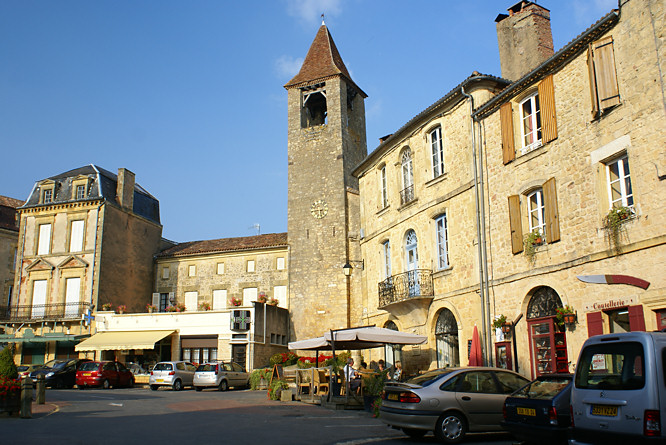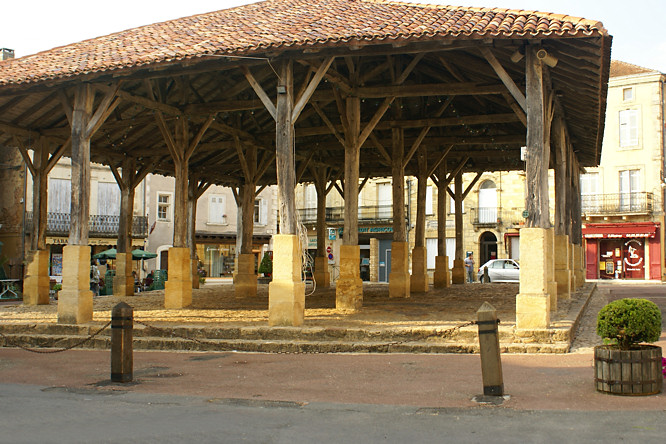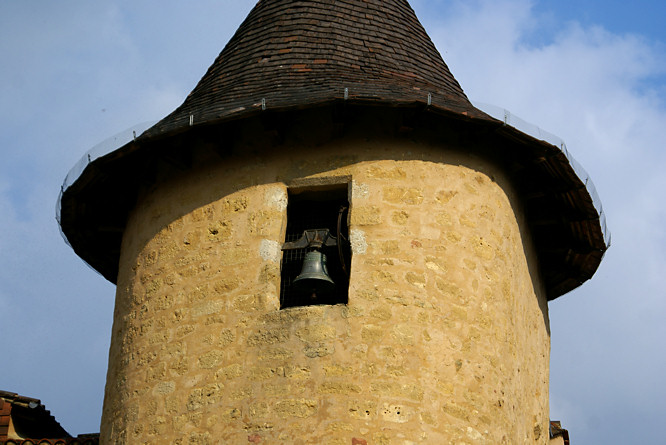Belves walled town in the Dordogne
Belves was built on top of a hill for protection. It was in the middle of a medieval war zone between France and England. It was a walled city. In France these are known as bastide towns.

Over the years most of the walls have fallen down or been robbed of their stone so that houses could be built in the town. It is not the most attractive Dordogne town but is worth a visit to admire it's hilly location and covered market square.
The covered market was built in the 15th century and is first mentioned in the towns records in 1462. It is constructed with three rows of wooden posts resting on 6 stone columns. In 1530 economic growth and population expansion lead to a fourth row being built. Right up to the revolution one of the posts was used as a pillory. The chain and iron collar used on miscreants can still be seen today. The market square has always been the heart of the town's economic life.
In the centre of the town you can visit some troglodyte dwellings that date from around the 13th century. You can also see the medieval belfry and walls of a 14th century castle, and city hall. Belves is famous as being the 'town of seven bell towers'. The old town, called Le Castrum, originates from the 11/12th century and was originally surrounded by ramparts. These were 15 metres high under the hospital! Some of the ramparts are still visible - wander down the rue du Petit Sol and the rue de l'oiseau qui chante (street of the bird that sings)

Belves is 15 kilometres north of Monpazier, and 20 km south of Sarlat-la-Canéda, in the Dordogne region. One event not to be missed is the annual 'medieval festival' at Belves in early August, when the town reverts briefly to the 15th century, with everything from jugglers to falconry on display and really is successful at taking you back in time despite the visitor numbers!
Belves has a population of about 1600. It was established as a defensive hill top settlement and the site has been inhabited since 4000BC. In the 13th century it was the property of the Archbishop of Bordeaux. A fortified rampart connected the town to the 11th century fortress that overlooked it and these solid stone walls still enclose the old town. Some of the old houses are turreted and the terraces flanking the ramparts are now flower gardens that blaze with colour in the summer months.
In the Place d'Armes there is a historic 12th century. There are numerous Gothic and Renaissance buildings, a Dominican convent topped by an octagonal clock tower, a church built in the 13th century. These buildings and the narrow cobbled streets remind you of its ancient and varied history. There is a weekly market every Saturday morning under the covered market, a fair on the third Sunday in the month and fetes during the last weekend in July. During the summer months there are many concerts of international standard held in the Eglise de Moncuq.


Travel books

